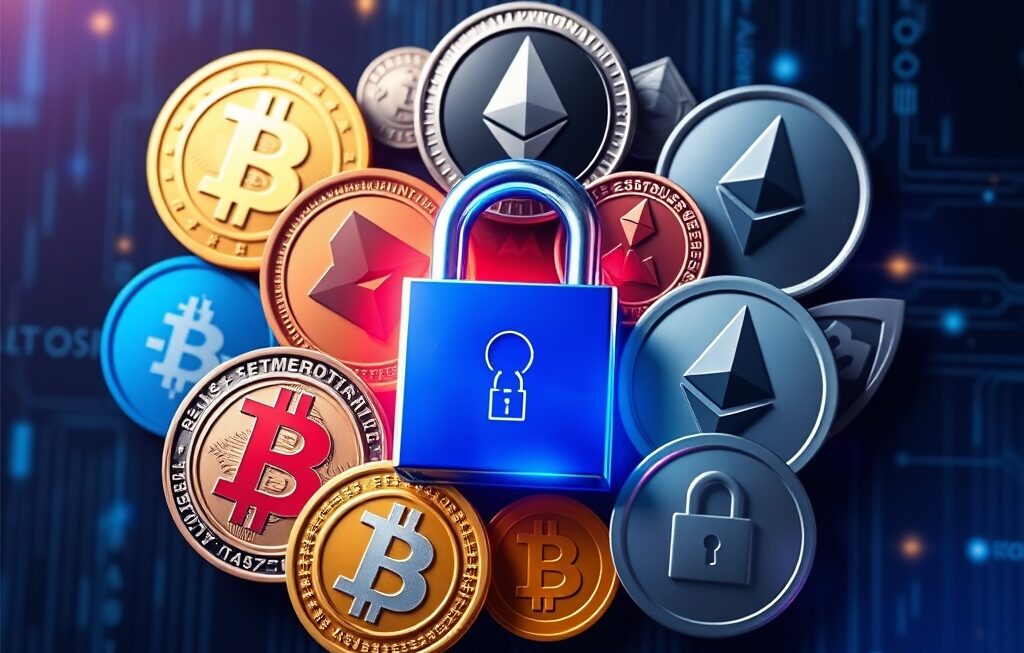The world of cryptocurrency has evolved dramatically in the past decade, and one of the most revolutionary innovations to emerge is the decentralized exchange (DEX). Unlike traditional centralized exchanges (CEXs) such as Binance or Coinbase, DEXs allow users to trade directly with one another without intermediaries. This approach not only increases transparency but also enhances privacy and user control.
As blockchain technology continues to mature, the future of decentralized exchanges (DEXs) looks more promising than ever. DEXs are rapidly becoming essential components of the crypto ecosystem, offering new levels of autonomy, security, and innovation. In this in-depth analysis, we explore the evolution, advantages, challenges, and future potential of DEXs — and how they could redefine the global financial landscape.
Understanding Decentralized Exchanges
To understand the future of decentralized exchanges (DEXs), we must first explore what they are and how they function.
A decentralized exchange is a peer-to-peer trading platform that operates on blockchain networks. Instead of relying on a centralized authority to manage user funds, DEXs use smart contracts — self-executing pieces of code that facilitate secure, trustless transactions between parties.
This means that users maintain full control over their private keys and assets, reducing risks associated with centralized platforms, such as hacks, mismanagement, or sudden regulatory shutdowns.
How DEXs Differ from Centralized Exchanges
| Aspect | Centralized Exchange (CEX) | Decentralized Exchange (DEX) |
|---|---|---|
| Custody | Funds held by the platform | Users retain control of funds |
| KYC Requirements | Mandatory | Optional or minimal |
| Transparency | Limited | Fully transparent (on-chain) |
| Security Risks | Vulnerable to hacks | Lower risk through decentralization |
| Speed & Liquidity | High liquidity | Improving rapidly through innovation |
DEXs operate autonomously, allowing users to trade without surrendering custody — a foundational principle of the crypto movement.
The Evolution of DEXs
Early DEX platforms such as EtherDelta and IDEX were groundbreaking but faced challenges like low liquidity and poor user experience. However, new generations of DEXs have addressed these issues through innovation in automated market makers (AMMs), cross-chain compatibility, and layer-2 scaling solutions.
Notable milestones include:
- 2018: The emergence of AMM-based exchanges like Uniswap, which replaced traditional order books with liquidity pools.
- 2020: The rise of DeFi, which fueled massive growth in DEX activity and trading volume.
- 2021–2024: Development of multi-chain DEXs, enabling seamless asset swaps across different blockchains.
Today, platforms like Uniswap, SushiSwap, Curve Finance, and PancakeSwap process billions in daily trading volume, signaling a major shift toward decentralized trading infrastructure.
Advantages of DEXs
The future of decentralized exchanges (DEXs) is driven by several undeniable advantages that make them increasingly attractive to traders and investors.
1. True Ownership and Control
DEX users maintain complete control over their funds. Assets never leave their wallets until a transaction occurs, eliminating the custodial risk inherent in centralized exchanges. This aligns perfectly with the core ethos of blockchain — decentralization and autonomy.
2. Privacy and Anonymity
Many DEXs do not require Know Your Customer (KYC) procedures, allowing users to trade anonymously. This privacy-first model appeals to crypto enthusiasts who prioritize data protection and sovereignty.
3. Transparency
All DEX transactions occur on the blockchain, creating an immutable public ledger. Every trade, liquidity pool, and smart contract operation is verifiable, reducing the potential for manipulation or fraud.
4. Security
Because there is no central database for hackers to exploit, DEXs are inherently more secure. The decentralized infrastructure ensures that even if one node or participant is compromised, the network remains intact.
5. Innovation and Accessibility
DEXs have democratized finance by allowing anyone with an internet connection to participate in trading, liquidity provision, and yield farming. This open-access model fosters continuous innovation across decentralized finance (DeFi) ecosystems.
Challenges Facing DEXs
Despite their advantages, decentralized exchanges still face challenges that must be addressed for mainstream adoption.
1. Liquidity Fragmentation
Liquidity is often spread across multiple DEXs and blockchains, leading to inefficiencies. Aggregator platforms like 1inch and Matcha are helping solve this issue by connecting liquidity sources across networks.
2. Scalability and Transaction Fees
As networks like Ethereum experience congestion, gas fees can surge, making small transactions impractical. Layer-2 solutions such as Arbitrum, Optimism, and Polygon are mitigating these issues by providing faster and cheaper transactions.
3. Regulatory Uncertainty
Governments are still grappling with how to regulate decentralized platforms. Some regulators argue that DEXs facilitate unmonitored trading and potential misuse, while others see them as vital innovations for transparent financial systems.
4. User Experience
Early DEXs were difficult to navigate, requiring technical knowledge to connect wallets and execute trades. Fortunately, modern platforms have improved significantly, but usability remains a barrier for mainstream adoption.
Technological Innovations Shaping the Future of DEXs
The future of decentralized exchanges (DEXs) is deeply intertwined with technological evolution. Several key innovations are shaping the next phase of decentralized trading.
1. Layer-2 Scaling Solutions
Layer-2 technologies like zkSync, Arbitrum, and Optimism dramatically improve speed and reduce transaction costs, making DEXs more competitive with centralized exchanges.
2. Cross-Chain Compatibility
Interoperability is becoming a cornerstone of DEX development. Future DEXs will allow seamless swaps between assets on different blockchains — for example, trading Bitcoin for Ethereum without intermediaries.
Projects like ThorChain, Cosmos, and Polkadot are already advancing this vision.
3. Decentralized Governance
Many DEXs use governance tokens (like UNI or SUSHI) to enable community-driven decision-making. This empowers users to vote on protocol upgrades, fee structures, and future development — reinforcing decentralization in both function and leadership.
4. Integration with DeFi Ecosystems
DEXs are increasingly integrated with DeFi protocols, providing tools for lending, staking, and synthetic assets. This synergy allows users to move seamlessly between trading and yield-generating activities within a single ecosystem.
The Future of DEXs: Key Predictions
As technology, adoption, and regulation evolve, the future of decentralized exchanges (DEXs) is poised for exponential growth. Here are the key trends likely to define the next decade:
- Institutional Adoption: More institutional investors will enter DeFi, seeking exposure to decentralized trading for efficiency and transparency.
- AI Integration: Artificial intelligence will play a major role in optimizing liquidity, predicting market trends, and automating trades.
- Hybrid Models: The rise of semi-decentralized exchanges that combine the efficiency of CEXs with the transparency of DEXs.
- Decentralized Derivatives: Expansion of DEXs into futures, options, and synthetic markets, challenging Wall Street’s traditional dominance.
- Enhanced Regulation: Smart regulatory frameworks will emerge to protect users while preserving innovation.
Together, these trends point toward a more open, efficient, and equitable financial ecosystem powered by decentralized exchanges.
The Role of Regulation in the Future of DEXs
Regulation will undoubtedly shape the future of decentralized exchanges (DEXs). Rather than suppressing innovation, balanced regulation can help legitimize DEXs, attract institutional participation, and promote global trust.
Frameworks from organizations like the European Union (MiCA) and discussions by the U.S. SEC are paving the way for regulatory clarity. Ideally, future regulations will encourage compliance while preserving user autonomy and privacy.
Why the Future of DEXs Is Bright
Despite challenges, the potential of DEXs remains vast. Their combination of transparency, autonomy, and accessibility aligns perfectly with the decentralization movement driving blockchain adoption worldwide.
As more users seek financial independence and control, decentralized exchanges will become the default infrastructure for digital asset trading.
In the long term, the future of decentralized exchanges (DEXs) will likely merge traditional finance with blockchain technology, ushering in a new era of inclusive global finance — one where individuals, not institutions, control the flow of capital.

In Summary
The future of decentralized exchanges (DEXs) represents more than a technological shift — it symbolizes a fundamental change in how value is exchanged globally.
By removing intermediaries, empowering users, and fostering transparency, DEXs are building a fairer, more resilient financial system.
Although obstacles like regulation and scalability persist, innovation continues to accelerate. As blockchain networks evolve and global participation expands, DEXs are poised to become the backbone of decentralized finance and the next frontier of global trading.
In essence, DEXs are not merely an alternative to centralized exchanges — they are the foundation of the financial systems of tomorrow.



